The Audio Precision APx517B Acoustic Audio Analyzer debuted at the end of 2020 as a solution specifically built for the production-line testing of speakers, microphones, headphones, headsets, and the wide range of consumer electronics incorporating speakers and microphones. In his review, David Logvin explores audio measurements with this fully integrated hardware with digital interface options and accredited calibration.
Audio Precision, an audio test manufacturer based in Beaverton, OR, has long been a world leader in electroacoustic measurement, from its first audio analyzer released in 1985 (the System One) to its latest design, the APx517B Acoustic Analyzer, which debuted at the end of 2020 (Photo 1). The APx517B model is primarily targeted at production test applications, supplementing a powerful product line of analyzers considered the gold standard in audio measurement.

In recent years, the APx500 series software (release 6.02 as of April 2021) has expanded, and their system offerings have become more flexible, powerful, and most interestingly, easier to operate, thanks to great strides in software and API support.
Historically, an AP analyzer has been a significant capital investment perfectly suited for R&D applications, but often outside the demanding budget constraints of production testing. Two years ago, Audio Precision began an interesting new venture into entry-level test applications for analog-only test setups. That system, dubbed the APx500 Flex, debuted in 2019 and was built upon the same powerful APx500 software, but unlike all other AP products, did not ship with a dedicated hardware analyzer. Instead, the AP software was then paired with customer-supplied hardware using an ASIO interface, leveraging significant cost savings. This intriguing system was covered in-depth by Vance Dickason in the March 2020 issue of Voice Coil.
While that was a fine product for the analog-only use cases, the new APx517B offers an intriguing proposition, combining many of the features from the workhorse APx52xB analyzer with the APx1701 transducer test interface, all in in a 2U rack-mountable unit. This is a highly compact and space-efficient product. By comparison, a rack-mounted version of the APx52x series is 3U high by itself, while the APx1701 requires an additional 2U of rack space.
The APx517B (Photo 2) expands the options and capability of lower-cost AP analyzers, returning to the traditional Audio Precision model of a tightly integrated hardware and software pairing. And while using the APx500 software is always a pleasure, it is the thought and level of hardware integration of this new model that deserves discussion.
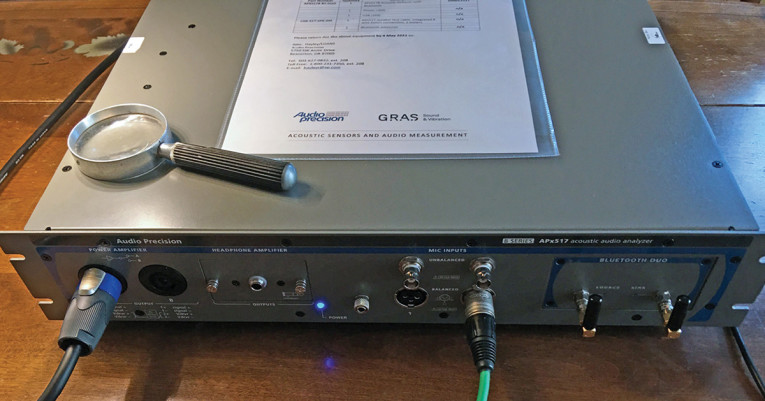
Cost Reduced, Not Quality Reduced
While this system offers incredible value and flexibility, it does not represent a downgrade of the standards that AP customers have come to expect over the past three decades. The accessories provided with the analyzer are a good indication of the build quality. In addition to a heavy-duty power cord and USB cable, the included speaker cable features a Neutrik twist lock connector with a Canare cable. That speaker cable is assembled as a four-wire Kelvin and terminated with alligator grabbers. Thanks to this cable configuration, highly accurate measurements of loudspeaker impedance can be taken, without the need for any cable changes, external relay boxes, or the extra step of calibrating out the hook-up cable’s internal resistance.
Analog inputs on the APx517B are less than -100dB THD+N, which compares favorably with its higher-tiered instruments (e.g., the APx555B, typically -120dB THD+N), further confirming the high suitability of this instrument for a production test floor.
I/O Feature Set
On first inspection, one of my favorite features of the APx517B is what you don’t notice—fan noise. This is the first release from Audio Precision to utilize thermostatically controlled cooling fans, a significant upgrade and one that I fully endorse and appreciate. Hopefully, it won’t be long before this fan improvement becomes standard across all of the analyzer models from Audio Precision.
This system is built to be an all-in-one test and measurement solution for speakers, microphones, and headphones. The APx517B (Photo 3) provides a 35W monophonic Class AB power amp with two relay-controlled outputs, a stereo headphone amplifier, two microphone inputs (balanced and unbalanced), as well as microphone power supplies (+48V phantom and +24V constant current power).

Rounding out this feature-packed product, the model can be outfitted with an optional digital configuration—Bluetooth (BT) Duo, PDM 16, PDM, Digital Serial I/O, HDMI + ARC, or Digital I/O. For this review, I opted for the BT Duo module to investigate how well the APx517B can navigate the world of open-loop Bluetooth measurements.
The back panel (Photo 4) is simple and includes an IEC320 socket that accepts universal power (100VAC to 240VAC), a mains rocker switch, a USB Type B port for connection to the PC, and a ground lug, as well as DB9 serial port connections for common auxiliary accessories (e.g., buttons or foot pedals typically used on a production line).

Flex for the People
The base configuration of the APx517B includes 11 components in the software package: two-channel ASIO interface, File Analysis, Sequence Mode, Input Signal Monitors (including FFT monitor), Level & Gain, Frequency, THD+N, Loudspeaker Production Test (including Rub & Buzz), Stepped Frequency Sweep, Pass/Fail Measurement, and Signal Acquisition Measurement.
If your production needs require tests not included in the base configuration, additional software can be purchased as convenient and logical bundles (dubbed “Flex Packs”), or individual tests can be purchased a la carte. This makes a great deal of sense because, unlike an R&D setting, the production environment is often narrowly focused, so the ability to fine-tune your software needs provides excellent budgetary flexibility.
An exciting new feature for the APx 6.x software release is the ability to capture simultaneous analog and digital test signals. One good example of the usefulness of this new feature would be to measure an analog reference microphone and a digital DUT microphone. This couples naturally with the ability to easily capture transfer function measurements (debuted in the APx 5.x release and well-documented in Stuart Yaniger’s review of the flagship model APx555 B Series Audio Analyzer in the December 2019 issue of audioXpress). This is further proof of the excellent design choice to have the APx517B have full access to the same software used in the higher-end APx models.
Headphone Test
To investigate the ease of taking headphone measurements using the APx517B, I decided to test a classic set of Sony MDR-7506 (Photo 5). The internal 1/2” Bruel & Kjaer (B&K) microphones of the head-and-torso (HAT) simulator were routed to my Type 5935 B&K power supply (providing the needed 200V polarization), then connected to the unbalanced inputs of the APx517B. Finally, the cabling of the Sony headphones was connected to the built-in headphone amplifier module of the APx517B to run a standard acoustic response sweep, from 20Hz to 20kHz with 100mV input. Figure 1 shows the results, confirming the very smooth midrange response of these popular headphones.


If you choose to add the BT Duo module, as in the configuration of the review sample, the APx517B becomes a powerful solution for testing both analog and Bluetooth headphones/headsets for the measurement of frequency response, THD, isolation, and more.
BT Example
To study the capability of the BT Duo module installed in the APx517B, I decided to test a Bluetooth speaker, the Soundmatters Dash 7 (Photo 6). Bluetooth (for either microphones and/or speakers) is configured just like any other input or output on an APx analyzer, by going to Signal Path Setup and selecting the output “connector” as BT. This immediately opened the Bluetooth Settings sub-panel (Figure 2). I then chose the appropriate profile from the available choices of Source, Sink, Hands free, and Handset. Next, I chose the relevant profiles, source, and hands free, and then scanned for devices.
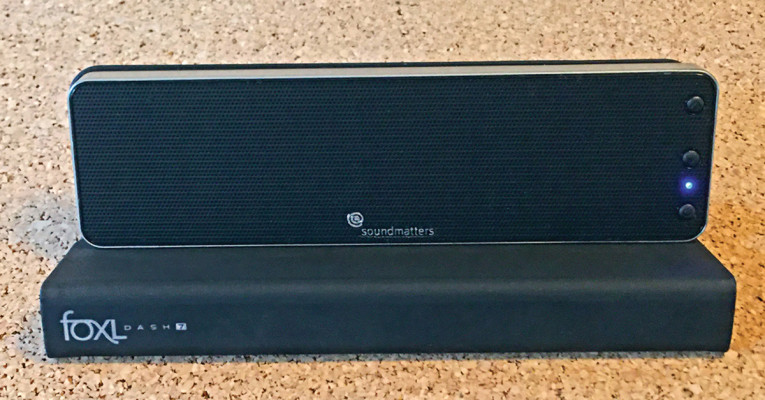

Once my speaker was found, I paired with the device and connected. There is great control and logically designed sub-panels allow you to select and modify which profiles (A2DP, AVRCP, and HSP/HFP) you need to configure for each device under test (DUT). These settings are all automatically stored for future use and quick connections. Furthermore, there is full access to which codecs you want to use for any DUTs; the choices provided include aptX HD, aptX Low Latency, aptX, AAC, and SBC.
Before measuring the frequency response of this wireless test speaker, I measured the DUT delay due to BT and DSP processing; this measured just over 200msec (Figure 3). I extended the acquisition time from the default value of 50msec to 250msec, then ran a Frequency Response measurement.

Results are shown in Figure 4 for the speaker in half-space with a single microphone at 1m. For improved low-end accuracy, a near-field measurement could be taken and then spliced together at a mid-bass frequency in the range of 200Hz to 300Hz. This measurement makes good sense, as this speaker system uses full-range drivers that enter break-up mode around 14kHz, which can be seen by inspection of the peaking response followed by the rapid attenuation above the passband.
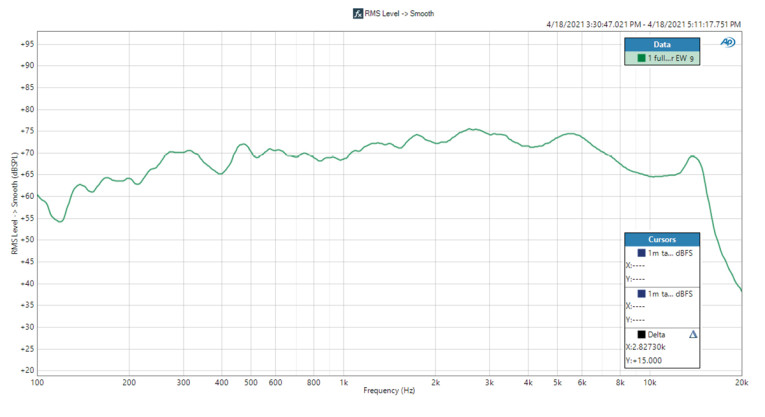
Loudspeaker Production Test
Next, I explored the built-in capabilities for testing passive loudspeakers. One of the standard measurement sets provided is called “Loudspeaker Production Test” (Figure 5). In just seconds, this rapid test sequence provides frequency response, phase, distortion product, Rub & Buzz, impedance, impulse, and free-air Thiele-Small parameters. Impressively, this is captured in a single log chirp sweep, without the use of custom switch boxes or specialized cabling, just by using the provided Kelvin four-wire cable. To investigate, I tested two identical car audio mid-bass drivers, one good unit and the other with a known distortion issue. The speaker test and a sampling of the results from this rapid measurement test set are shown in Photo 7, Figure 6, and Figure 7.
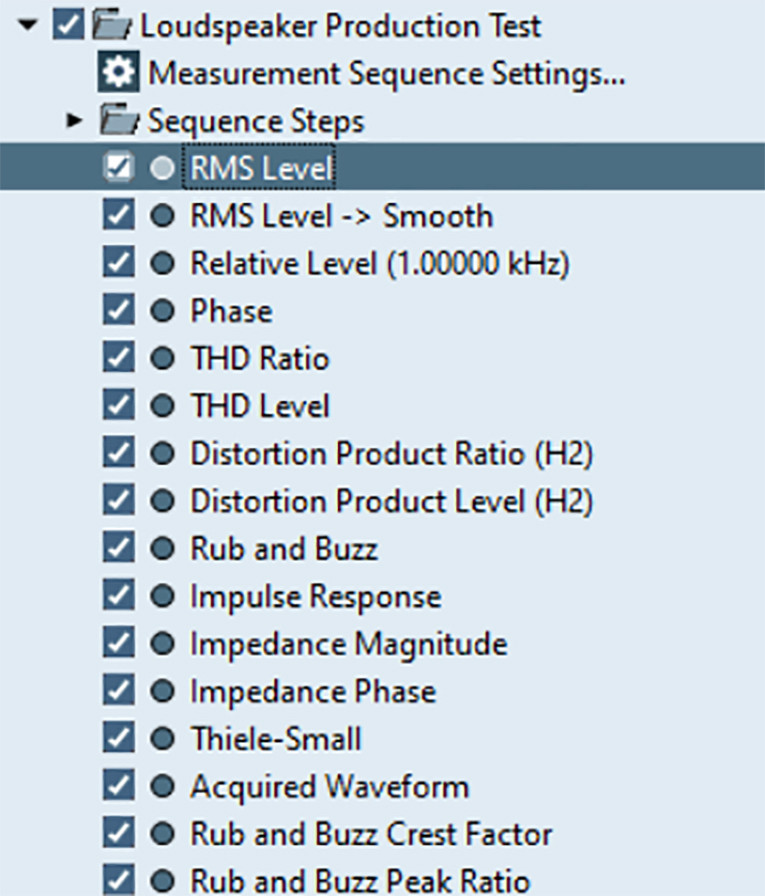
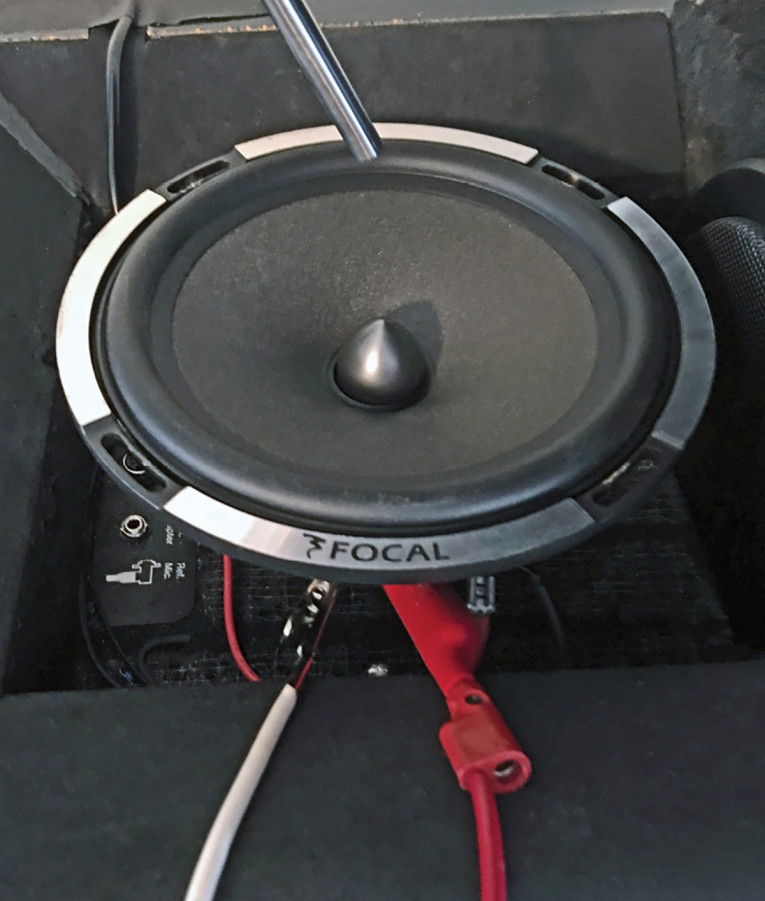


Approximately five years ago, AP launched its “Quick Tips” series on the company’s YouTube channel. These are very short (typically just 1 to 2 minutes) videos that explain a particular test and how to set it up. For the APx517B series analyzer, a slightly longer series of videos were recently posted, highlighting the fact that an end user can unbox the analyzer and begin testing DUTs in just five minutes. This impressive feat is solely possible due to the high level of integration.
Unlike most production test systems, this is not a menagerie of separate instruments that must be patched together, and then individually calibrated. It is one instrument that cleverly integrates amplifiers, microphone power supplies and impressive digital I/O capabilities, reducing complexity for both deployment and calibration services. This is further enhanced due to the fact that the APx517B can run all of the same software as other Audio Precision analyzers (e.g., the APx52xB and the APx 555B), allowing greater collaboration and code-sharing between R&D and production engineering departments.
Production Engineering DNA
For production test setups, having the constant current power (CCP) built into the unit is quite helpful and removes the need for frequent use of external microphone calibrators. Having the ability to easily read the unique serial number and calibration data via the Transducer Electronic Data Sheet (TEDS) instead of the very 20th-century method of paper certificates is a further boon. Setting up a microphone via TEDS couldn’t be easier. Simply connect to one of the two unbalanced microphone inputs, turn on the CCP, and read the TEDS.
The time could be further reduced by the use of Audio Precision sequences or external scripts (Python, C#, LabView, etc.) to minimize the number of button pushes before the production line is ready to test.
By leveraging CCP microphones with the TEDS interfaces, microphone calibration for your measurement system is as simple as pressing a button marked “Read TEDS”. Figure 8 shows an example using a GRAS 1/2” 26CK microphone. Since 2020, GRAS Sound & Vibration (Denmark) has been a sister company of Audio Precision (US), with both firms now under the umbrella of Battery Ventures/Axiometrix Solutions. From the customer perspective, this offers an opportunity to procure test equipment and measurement microphones from a single supplier, further simplifying setup and calibration needs.

Final Thoughts
By their very nature, engineering decisions are always about managing compromises in a metered and meaningful manner. Well-designed and successful products are typically the result of careful and meticulous planning, clever efforts, and releasing the right product at the right time.
The APx517B is a toolkit and instrument unlike any other I have seen. Having served on the front lines of test engineering in the past, I can personally appreciate the strong value this instrument provides. By integrating an audio analyzer, audio power amp, and headphone amplifier as well as onboard phantom and CCP microphone supplies, the APx517B provides a true turnkey solution. aX
Resources
V. Dickason, “Audio Precision APx500 Flex Audio Analyzer — Hands On,” Voice Coil, March 2020.
S. Yaniger, “Audio Precision APx555 B Series Audio Analyzer — Expanded Capabilities and Software,” audioXpress, December 2019.
This article was originally published in audioXpress, August 2021.
 About the Author
About the AuthorDavid Logvin is an acoustics engineer at TDK InvenSense, working in the MEMS microphone division. With more than 20 years of experience, he has designed loudspeakers and other products for Snell Acoustics, Outlaw Audio, ClearView Audio, Cambridge Sound Management, and others. During his 14 years at Snell Acoustics, he developed and designed dozens of high-end loudspeakers and amplifiers, as well as helped to create loudspeaker standards in close collaboration with THX. David then focused his efforts on R&D, creating innovative, award-winning piezo-driven membrane loudspeakers with ClearView Audio (formerly known as Emo Labs). At Cambridge Sound Management, he put his skills in room acoustics to use in the field of sound masking for corporate applications. Most recently, he rejoined his fellow Snell Acoustics alumni, Dr. Joseph D’Appolito, to design several new loudspeakers for Outlaw Audio. In addition to his lifelong love of music and acoustics, David is an active participant in the Boston tabletop game design community. He is a member of the Audio Engineering Society (AES) and the Boston AES Section and lives in Lowell, MA with his family.






